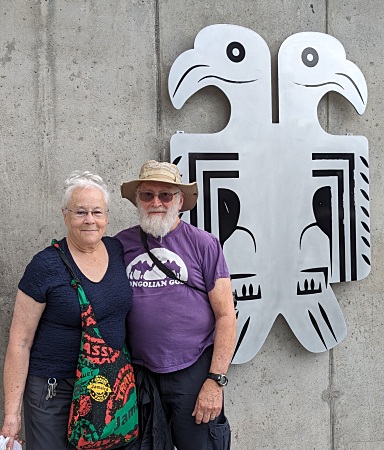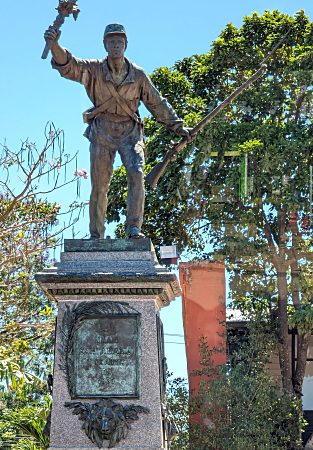We spent the first day "exploring" San Jose to get a feel of the city.
Wandering around we saw lots of crafts for sale.
These workers were swinging back and forth scraping and cleaning this wall.
Not quite Cirque du Soleil but close.
.
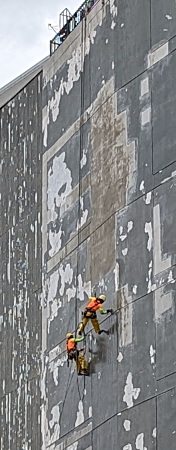
We asked a random local resident where was a good place to get lunch and he told us about Nuestra Tierra.
Clearly intended for the tourist trade with great food and live entertainment.
The text translates: Pure Life! Our Land Restaurant Authentic Costa Rican food
We were joined with friends we had traveled with before.
Left to right: Jim, Alan, Nancy, Jan, David, and Linda.
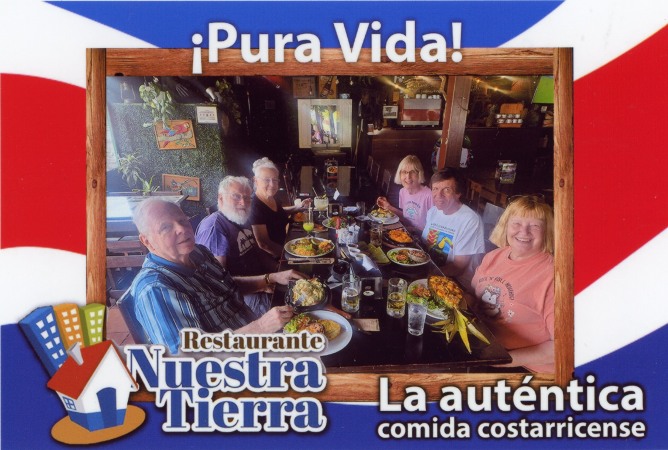
Here are a couple of our delicious seafood dinners.
The octopus was very tender.
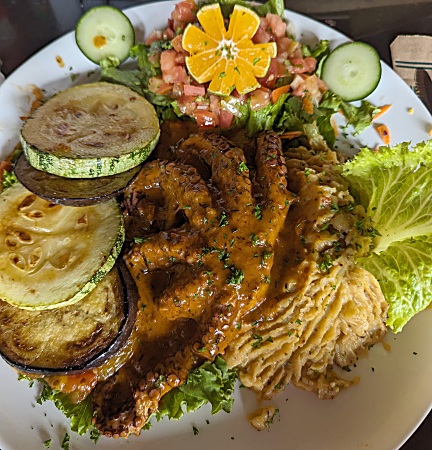
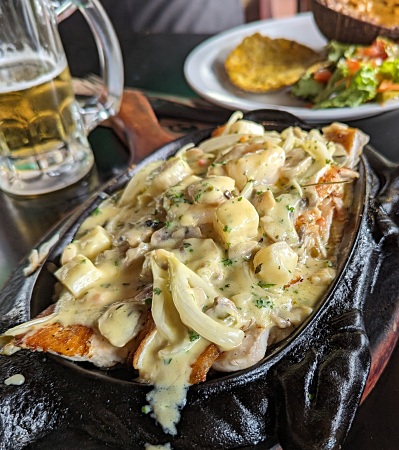
Live entertainment while we were there.
I would call the tall instrument a washtub bass but that wouldn't be entirely accurate.
What would you call it?
On a prior visit we had visited the Pre-Columbian Gold Museum and wanted to see it again.
It is located under a plaza in the center of the city.
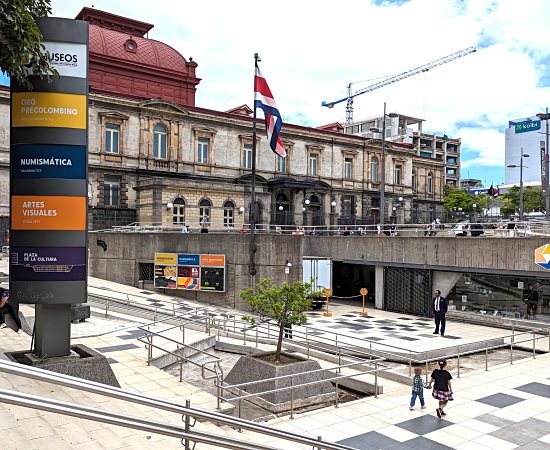
In the historical section was this representation of preparation for medical treatment with herbs laid out.
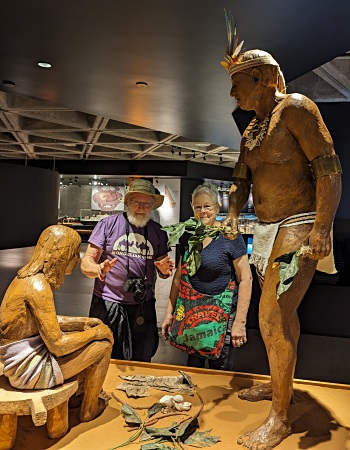
Clay figurines
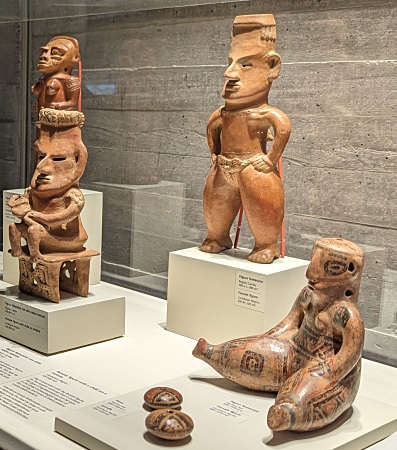
Another section had Pre-Columbian gold.
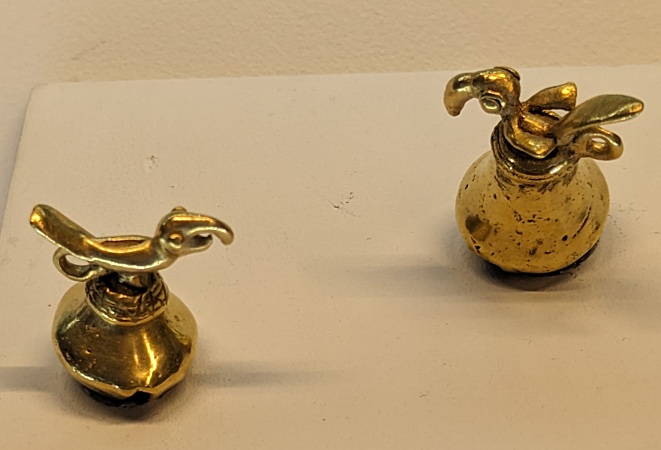
And another had money that has been used in Costa Rica including coffee boletos.
These often had the names of the coffee growers, haciendas or geographical location and the value they represent, which can be given in measures of volume for harvesting coffee (baskets, crates, measures) or equivalent to the national coin (reales, pesos, centavos, colones, centimos).
The forms and materials of boletos were varied and changed with the passage of time, the most widely used being bronze, brass, aluminum, nickel, lead, copper, plastic, Bakelite, cardboard and paper mainly.
In this way, boletos came to be a type of private coin that circulated alongside the official coin.
Have you ever wondered why you put money in a "Piggy Bank"?
There was a display in the museum explaining.
The heading says "The origin of piggy banks in the shape of little pigs (chanchitos)"
